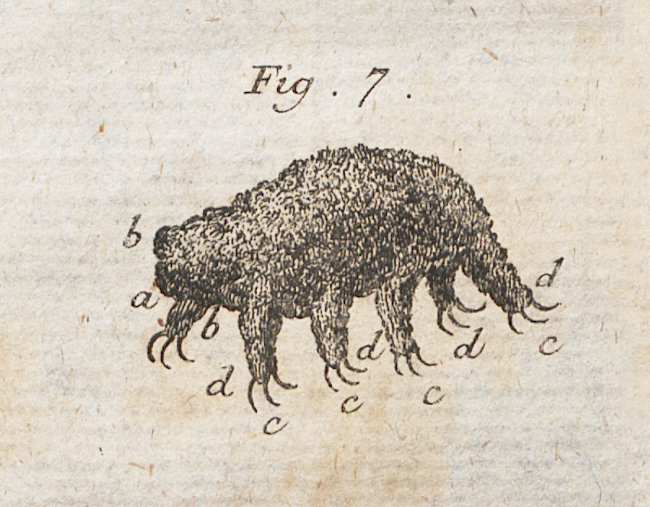- cross-posted to:
- history
- cross-posted to:
- history
OP: @overholt@glammr.us
The tardigrade’s tiny size belies both its astounding physical resilience and its charisma. Also known as water bears or moss piglets, they can survive extreme temperatures and pressures, withstand radiation levels that would kill most organisms, and reanimate after long periods of desiccation or oxygen deprivation. They can even handle being in outer space without too much trouble — impressive for creatures that are roughly the size of a grain of sand. As a result, the 1300 known species of tardigrades are found everywhere on Earth: from the deep seas, to rainforests, to Antarctica.
The first recorded observations of these remarkable microfauna were published in 1773 by the German pastor Johann August Ephraim Goeze. Because they looked like tiny bears to his eyes, he called these strange creatures kleiner Wasserbär, “little water bears” (the name “tardigrade” came later in 1777, when an Italian biologist highlighted their slow movements). Goeze’s observations and drawings covered just a few pages, appended to his German translation of Charles Bonnet’s Traite d’insectologie, but they communicated the same wonder and fascination for tardigrades that many still feel today.
Very inspired day, sir. You posted some really cool things.



